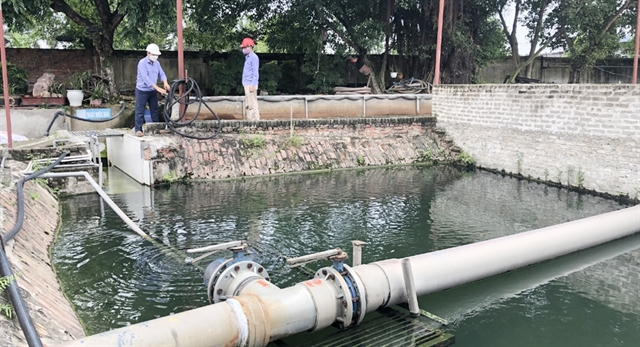 Environment
Environment

.jpg) |
| Various electronic components extracted from electronic products are being displayed for sale on a street in District 11, HCM City. — Photos nld.com.vn |
HÀ NỘI — Việt Nam has seen a rapid increase in electronic waste in recent years, posing significant challenges for waste management.
Experts emphasise the urgent need for Việt Nam to establish comprehensive laws governing electronic waste management and to develop modern, large-scale electronic waste recycling facilities capable of recovering valuable metals.
The advent of the Fourth Industrial Revolution and technological innovations have fuelled a surge in the production of electrical and electronic devices worldwide.
This has led to a corresponding rise in demand for these products, resulting in a substantial increase in electronic waste generation. Việt Nam is witnessing this trend, with a sharp uptick in domestic electronic waste adding to the complexity of waste management efforts.
The research findings from the Institute of Environmental Science and Technology also show that Việt Nam currently generates approximately 100,000 tonnes of electronic waste annually, mainly consisting of household appliances, electronics and office equipment.
It is estimated that by 2025, the volume of television waste alone could reach up to 250,000 tonnes.
According to the "Global E-waste Monitor 2020" report published by the United Nations, there were a total of 53.6 million tonnes of electronic waste worldwide, a 21 per cent increase compared to five years ago.
Asia emerged as the largest contributor, accounting for approximately 24.9 million tonnes, followed by the Americas, 13.1 million tonnes, and Europe, 12 million tonnes. Africa and Oceania generated 2.9 and 0.7 million tonnes, respectively.
If the current growth continues, it is projected that the global economy will generate around 74 million tonnes of electronic waste annually by 2030.
This makes electronic waste the fastest-growing category of municipal waste globally, primarily driven by the increasing consumption of electrical and electronic devices, while the lifespan of these devices is decreasing.
Electronic waste poses significant environmental and human health hazards due to its often-improper handling and disposal, sometimes being mixed with other types of waste.
Within electronic waste, there are numerous toxic heavy metals present in the casings and internal components of electronic devices. Therefore, if electronic waste is not properly managed, it can release harmful substances such as mercury, lead and nickel into the environment.
Electronic waste affects human health through various pathways of soil, water and air pollution, especially for workers directly exposed to the waste during handling and disposal processes.
Assessing the current state of electronic waste treatment and recycling in Việt Nam, Lê Thị Ngọc Dung from the Việt Nam Recycling Association said that despite the growing heap of electronic waste, the processing rate remained dismally low (below 10 per cent of the total generated e-waste).
With around 68 licensed companies tasked with handling these discarded gadgets, most were stuck in small-scale operations, processing a mere 0.25 - 30 tonnes per day.
These companies primarily resorted to old-fashioned manual methods, lacking the capacity to tackle more complex components such as electronic circuit boards.
.jpg) |
| Electronic waste is being collected for component extraction on Lý Nam Đế Street, District 11, HCM City. |
Dung said Việt Nam needed modern, large-scale recycling facilities equipped to extract precious metals from the piles of electronic waste.
It was not just about cleaning up the mess. It was about overhauling the entire recycling process, from haphazard collection to appropriate sorting and processing.
Sharing the same opinion, Đỗ Thị Thúy Hương, vice chairwoman of the Việt Nam Electronics Enterprises Association, emphasised the urgent need for a streamlined electronic waste collection network. Additionally, it is crucial to transition from scientific research to practical industrial-scale application, wherein licensed electronic waste processing facilities establish standardised procedures for all materials brought in for recycling.
Việt Nam should promptly enact robust legislation governing electronic waste management, laying down the groundwork for a regulated recycling industry.
This involves setting up a comprehensive system for tracking discarded electronics, ensuring accountability from start to finish. Public awareness campaigns are essential to educate citizens about the hazards of electronic waste and promote proper disposal habits.
And as for the Extended Producer Responsibility (EPR) system, Nguyễn Đức Quảng, deputy director of the Institute of Environmental Science and Technology, suggested involving private collection systems in EPR activities. This involves adjusting legal regulations (recycling rates, recycling standards, quotas) in line with the issuance of relevant regulations and developing formal dismantling and classification facilities for electronic waste. — VNS




